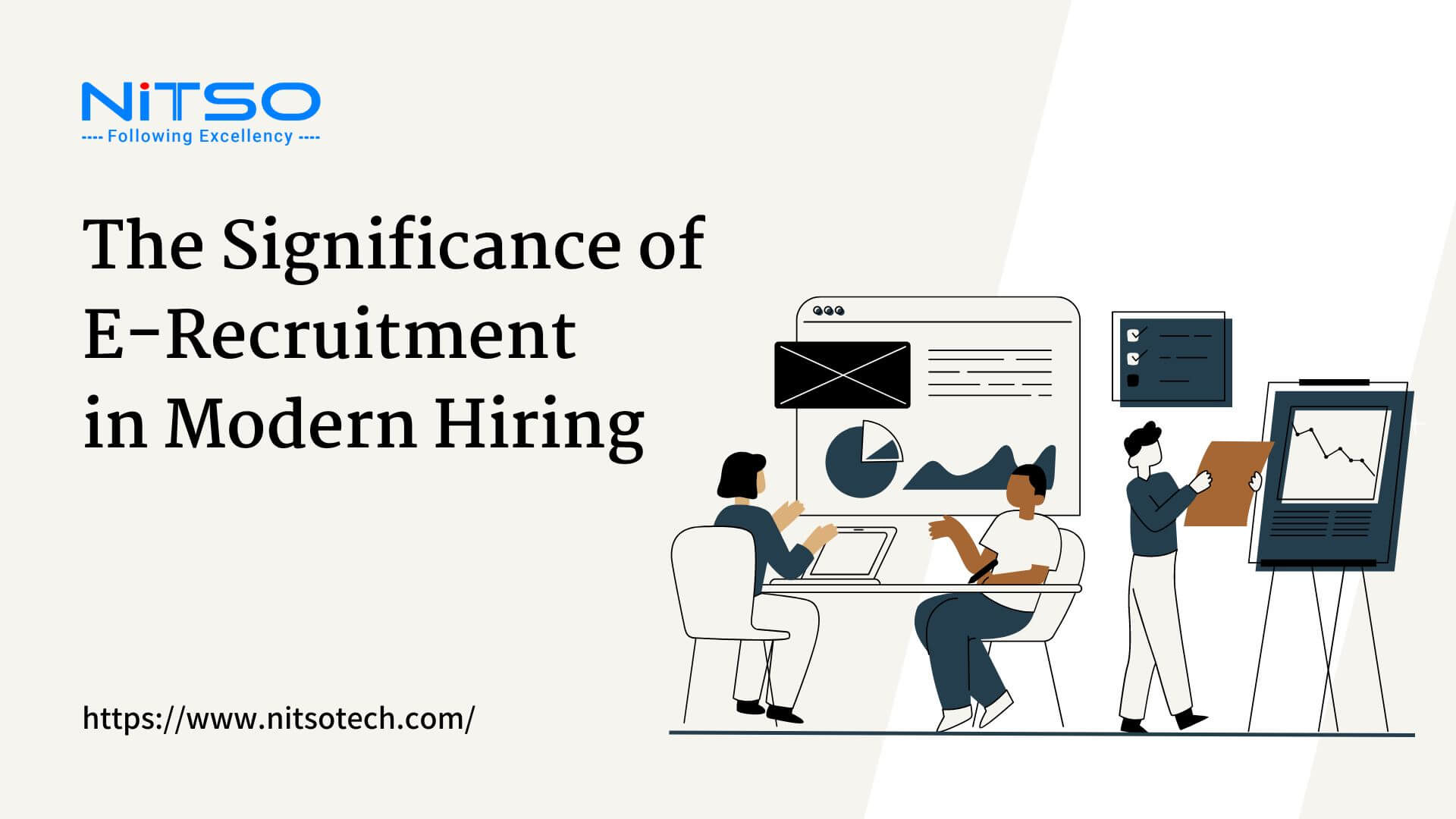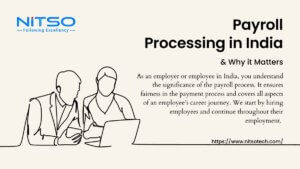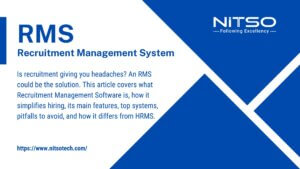Table of Contents
What Is E-Recruitment?
E-recruitment refers to the use of online and digital technologies to assist with various parts of the recruitment and hiring processes. It encompasses any technology or platform that an employer can utilize to source, attract, screen, assess, interview, evaluate, and hire candidates over the internet and digitally.
Some of the key components of e-recruitment include:
- Online job boards and recruitment websites to post open positions and search for candidates
- Candidate application and tracking systems to receive and organize applicant information
- Screening and pre-employment assessments conducted online
- Video interview software to interview candidates remotely
- Artificial intelligence tools like chatbots for communication and initial screening
- Analytics software to collect data and optimize hiring practices
- Company career pages optimized for online applications
- Integration with social media platforms to promote job openings
The main benefits of e-recruitment are its ability to expand talent reach, accelerate hiring processes, reduce costs, and improve efficiency for employers. It also provides a more convenient and accessible way for job seekers to find openings and apply.
E-recruitment first emerged with the rise of the internet and global adoption of digital technologies for business. Early online job boards mimicked newspaper classifieds but with expanded reach. Since then, e-recruitment has evolved to incorporate more advanced tools like AI algorithms, social media integration, and analytics. The COVID-19 pandemic further propelled adoption of digital recruiting out of necessity.
Now, e-recruitment has become a crucial element of any organization’s talent acquisition strategy. Employers who fail to leverage these technologies and online platforms are missing out on quality candidates. The future of recruiting is digital.
The Evolution of E-Recruitment
Before the digital age, job postings were limited to print newspaper listings, bulletin boards, and word-of-mouth. Candidates had to mail in or drop off paper resumes and fill out applications by hand. Early internet job boards mimicked classified ads, but allowed much wider reach.
Applicant tracking systems (ATS) allowed employers to collect and sort applications digitally. Screening tests and assessments also went online, replacing tedious paper forms. Video interviewing removed geographic limitations on talent pools.
Now, artificial intelligence takes e-recruitment even further with capabilities like automated resume screening, chatbot scheduling assistants, and analytics-based candidate recommendations.
E-Recruiting Methods Include
There is a diverse range of e-recruiting methods and digital tools now available, including:
- Online job boards and aggregators to post openings
- Social media platforms like Facebook and Twitter for promotion
- Employer career sites and microsites with role listings
- Programmatic/retargeting digital ads to engage passive candidates
- Email and text recruiting through automation tools
- Video screening and live video interview software
- Analytics tools for data-driven recruitment optimization
- AI algorithms for automated resume screening
- Applicant tracking systems (ATS) to organize candidates
- Online skills testing and assessments
- Chatbot systems to engage applicants 24/7
This wide range of digital recruiting options allows employers to source, engage, assess, and hire talent in new innovative ways. Utilizing multiple e-methods is recommended for best results.
What Are the Advantages and Disadvantages of E-Recruitment?
E-recruitment delivers many benefits but also comes with some potential drawbacks. Understanding the pros and cons allows employers to leverage the advantages and minimize the disadvantages.
Advantages of E-Recruitment
E-recruitment provides many benefits to employers including:
- Wider talent reach – access more candidates from global talent pools
- Lower costs – eliminates fees for traditional advertising
- Faster hiring – technology expedites screening and assessment
- Improved candidate experience – mobile-friendly, easy apply process
- Access to passive candidates – that may not be actively job hunting
- Elimination of geographic barriers – opening up more talent markets
- Advanced analytics – data offers insights to optimize strategy
- Enhanced employer brand – ability to showcase culture and values
- More efficient management – centralize data, processes, and communication
Disadvantages of E-Recruitment
Some potential drawbacks employers should be aware of:
- Impersonal screening – lack of human interaction during initial vetting
- Biased algorithms – that may discount qualified candidates unfairly
- Technical problems – issues with software, sites, or screening tools
- Information overload – too many applications to sort through
- No assessment of soft skills – which require in-person evaluation
- Lack of feedback – Candidates often don’t receive status updates
- Confusing job boards – outdated or irrelevant postings
- Security risks – of candidates’ personal information
- Unclear application status – causes frustration for candidates
By developing an optimized e-recruitment process, companies can maximize the advantages while mitigating the disadvantages as much as possible. Ongoing evaluation helps identify areas for improvement.
Types of Online Recruitment Methods
There are several types of online recruitment methods that leverage technology to source, attract, assess, and hire candidates. Here are some of the main types:
- Online job boards and aggregators like Indeed, Monster, etc. where employers post open positions
- Professional and social media sites like LinkedIn that combine networking and job search
- Company career pages and microsites that promote employer brand and available roles
- Specialized sites that focus on specific industries, locations, skills, etc.
- Smart talent CRM software that sources passive candidates through big data
- Social media recruitment through platforms like Facebook, Twitter, Instagram etc.
Tips for Effective E-Recruitment
Implementing e-recruitment effectively takes strategy and best practices. Here are some tips:
- Optimize your career site for the candidate experience – Make sure it is mobile-friendly, easy to navigate, and represents your employer brand. Include detailed information about culture, benefits, and open positions.
- Write clear, concise job descriptions – Focus on the most essential qualifications and skills needed. Use bullet points and break up large blocks of text.
- Promote openings across multiple platforms – Post on your career site, LinkedIn, job boards, social media, and niche sites for your industry. Cast a wide net.
- Provide application status updates – Send email notifications when applications are received, candidates are shortlisted, and next steps.
- Communicate promptly and personably – Respond quickly to applicant questions. Convey your brand voice.
- Simplify the application process – Allow easy apply through LinkedIn, Indeed, etc. Don’t require cumbersome data re-entry.
- Leverage data insights – Use analytics from your ATS to spot areas for improvement. Identify best sources for qualified applicants. Refine outreach strategy based on metrics.
- Train recruiters on your e-recruitment tools – Ensure proper use of ATS, video interviewing, assessment platforms, etc.
Following e-recruitment best practices will help attract, engage, and convert the best talent for your roles. The candidate experience is crucial, so optimize and streamline it.
What Are the Top 3 E-Recruitment Software?
The top e-recruitment software improves talent acquisition through automation, analytics, integrating, sourcing capabilities, and more. The leading platforms are:
- SmartRecruiters – AI-driven cloud platform with powerful collaboration tools.
- iCIMS – popular applicant tracking system (ATS) with broad functionality.
- Jobvite – social, mobile, integrated recruiting platform with built-in sourcing.
Key features that the best software offer include candidate relationship management, AI screening, one-click job distribution, collaboration, recruitment marketing, talent pools, and unified HR data. Choosing software aligned with specific business needs and talent acquisition goals is advised.
Article you might be intrested in: Reducing Candidate Drop-Off: Strategies for a Smooth Hiring Journey
Deduction
E-recruitment has become essential for hiring in the digital world. Online job boards exponentially expand employer reach. Applicant tracking systems enable more efficient screening and communication. AI and automation allow faster processes with less bias.
As technology continues to advance, e-recruitment will keep innovating as well. Employers who embrace digital-first hiring will have access to better talent across global markets. The future of recruitment is online.








0 Comments